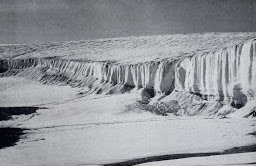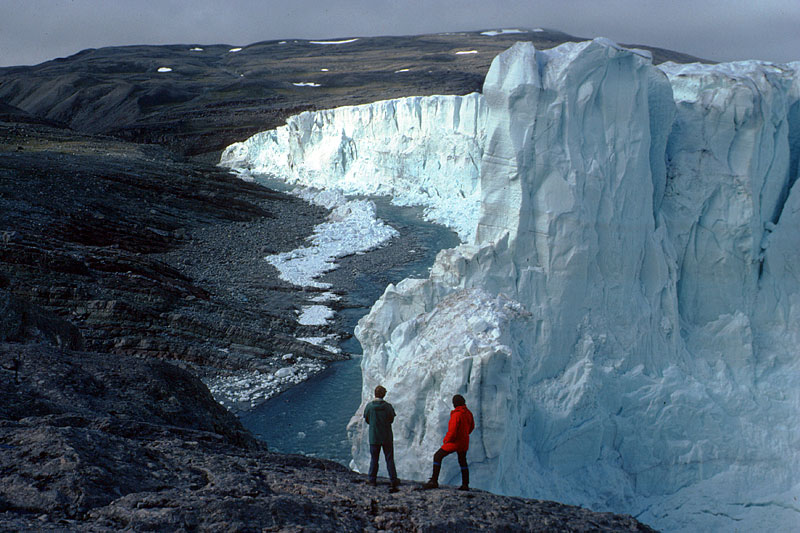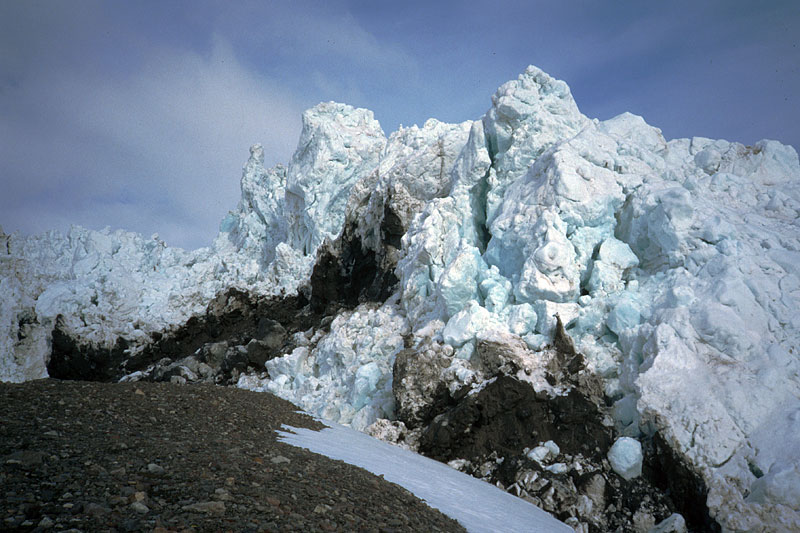Glacier / ice cap / ice sheet edges come in all shapes and sizes, and are rather intriguing. Their morphology depends on many factors. Much of the attention nowadays is on floating ice edges, especially on tidewater glacier snouts where huge collapses can occur, causing thousands of tourists on YouTube videos to scream with delight. Looking at the collapsing edges of glaciers has become one of the favourite tourist activities of our time........ but let's put that to one side for the moment and concentrate on ice edges on land.
Advancing ice front with cold and clean ice. Here the advance is against a reverse slope. So meltwater has an undercutting effect, helping to melt falling icefront debris and helping to keep the ice front vertical.
The chaotic leading edge of a surging glacier, where ice may be moving forward at a rate of more than 20 metres per day.
Where an ice edge is not actually advancing, you may still get an ice edge cliff if there is a reverse slope. This will enhance the warming of the ice edge, and therefore increase the melting rate so that it is greater than the melting rate on the glacier surface -- where a higher albedo will reflect heat back into the atmosphere which might otherwise be used for melting. A reverse slope will also concentrate meltwater activity up tight to the ice edge, carrying away debris and sometimes actually undercutting the ice cliff. We can see this effect on many of the illustrations above.
Where an ice edge is located on a flat surface or where there is an increasing bedrock or debris gradient, melting rates are always enhanced and the ice surface gradient will be reduced by ice edge collapse (in an advancing glacier) and by enhanced melting (in a glacier with a retreating edge).
(I almost said "retreating glacier" and stopped myself just in time. Glaciers do not turn around and move backwards when the edge is retreating -- they continue to move forwards, and the difference is that the rate of melting is in excess of the rate of ice supply.....)
All that having been said, the information from modern ice fronts is still not all that useful for recreations of what happens during the onset of a glacial episode. That is because -- in a world of global warming -- most ice edges of today are located in areas of ice-free tundra where there may be permafrost but where there may not even be widespread perennial snowpatches and snowfields.







No comments:
Post a Comment